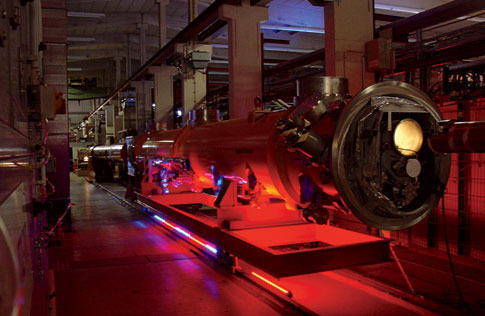

Click here for a photo gallery of our favorite bombshell fembots from television and film.
Fembots were a pop-culture staple long before Austin Powers battled them-witness the popularity of The Bionic Woman, The Stepford Wives and Blade Runner. But what is it about curvaceous cyborgs that stirs the imagination?
To some, fembots represent the perfect male fantasy: They´re sexy and submissive and have more techie features than the Xbox 360. But they also have a dangerous side that can reduce walls to rubble and make an army retreat. Perhaps the fembot´s allure resides in her ability to walk the line between total obedience and unfathomable power.
Feminist science-fiction writer Amy Thomson, author of robot-comes-of-age novel Virtual Girl, suggests that the fembot myth is attractive to men because it deals with â€a woman you create and control.†But tech journalist Daniel Wilson, author of How to Survive a Robot Uprising, argues that fictional fembots have hardly been portrayed as controllable-in fact, he claims, they´re often presented as the most dangerous robots of all, because feelings of attraction to them could leave their victims vulnerable to attack. â€A sexy robot that´s aggressive could be a wolf in rubberized skin,†he says.
The world´s first big-screen fembot was introduced in Fritz Lang´s 1927 science-fiction masterpiece Metropolis, a film set in a stylized future world of elite technocrats and oppressed machinists. A mad scientist who wants to destroy the machinists invents a beautiful, sadistic female robot that takes the place of a kidnapped political reformer named Maria. The evil Maria robot advocates war and gives a half-speech, half-striptease that whips the machinist masses into a revolutionary fervor.
Metropolis´s sexy, dangerous cyborg became the template for countless others, though not for several decades. There were few fembots in the mid-20th century, but the desire to connect beautiful women and high-tech machines was manifest in the cheesecake pinups painted on fighter planes and the dramatic curves of 1950s roadsters. Indeed, cars were the fembots of the Cold War era, with voluptuous lines and sparkling fins designed to echo the female form. Robots, on the other hand, were depicted as clumsy automatons like Robby the Robot in Forbidden Planet (1956). Despite Robby´s male name, the sweet, lumpy ´bot acted like a traditional housewife, bustling around, making clothes, and cooking for the other characters.
But as women´s social roles shifted in real life, so did those of their machine counterparts. In the 1970s, women had broken away from their Robby the Robotâ€style roles in the home and embraced the feminist movement, which led to a crop of fembot protest movies. The most famous of these is The Stepford Wives (1975), a fable in which men replace their uppity wives with obedient, beautiful robots who love cooking, cleaning and sex.
But the pop-culture fembots of the past two decades have been far from domestic. In the 1980s movie Eve of Destruction, a luscious robot with a nuclear bomb for a heart threatens a city with extinction after a man in a bar calls her a â€bitch.†In Blade Runner (1982), Daryl Hannah plays a delicate yet violent robot named Pris who nearly kills Harrison Ford´s character. Terminator 3 (2003) features a female version of the killer cyborg once played by Arnold Schwarzenegger. And, most spectacularly, nearly all the powerful cylons in the SciFi Channel´s hit TV series Battlestar Galactica are played by strong, devastatingly gorgeous women.
The Battlestar ´bots may be reminiscent of Metropolis´s Maria, but there are shades of Stepford in today´s real-life fembots. Last year, Osaka University researcher Hiroshi Ishiguro debuted â€office android†Repilee Q1Expo, modeled after Japanese TV newscaster Ayako Fujii and designed to be a perfect secretary who smiles and flutters her eyelids. But her bosses should beware-if life imitates art, Repilee could take a science-fictional turn for the nasty. We saw it in the movies: Labor unions and sexual-harassment suits are always preferable to an angry fembot. After all, she´s bound to be stronger, faster and smarter than you.






















